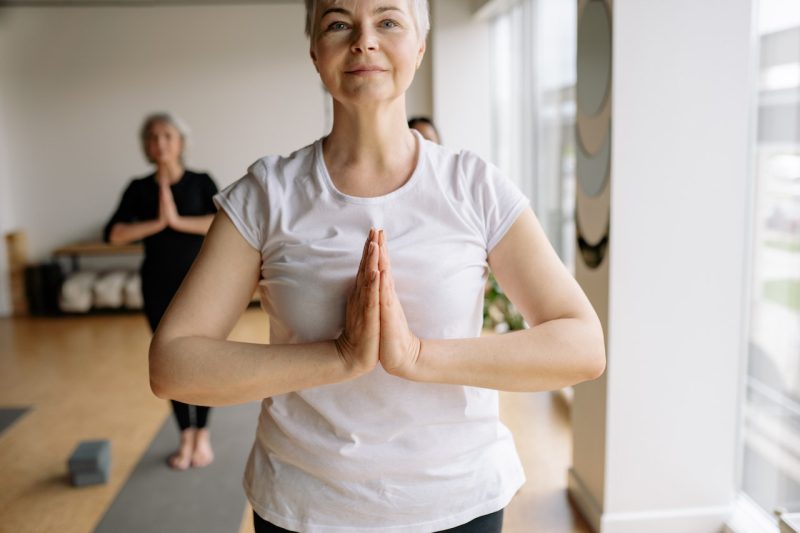An active lifestyle plays a vital role in women’s health and well-being. But studies continue to show that physically active women are less likely to develop breast cancer than inactive women.
One study revealed that women who increased their physical activity after menopause experienced a lower risk of breast cancer than women who didn’t exercise.
Reducing the Risk
It’s important to note that breast cancer can still develop in women who regularly exercise, as many factors contribute to women developing this disease. This includes gender, age, weight, and family history of cancer.
Nevertheless, the facts remain that regular exercise has been found to reduce the risk of developing breast cancer (up to 20%) in women and help manage or control the disease’s progression. For example, one study suggests that survivors of breast cancer who exercise regularly may live longer than those who don’t.
Other Potential Benefits of Exercise
Exercise may also decrease general inflammation, reduce tissue damage and oxidative stress, and help regulate hormones.
Additionally, one reason exercise might decrease breast cancer risk is because of its ability to help reduce body fat, which helps prevent the production of hormones that can stimulate breast cancer cell growth and survival. Finally, vigorous exercise may also increase essential vitamins like vitamin D3 that fight off carcinogenic compounds in the body.
How Much Exercise Do Women Need?
The American Cancer Society recommends that women aim for at least 150 minutes of moderate-intensity weekly exercise. This includes cardio, such as walking, hiking, cycling, or elliptical training.
Exercising at high intensity for 75 minutes a week also provides the same benefit for those short on time, but it’s recommended that you spread out your cardio workout throughout the week (30 minutes/5 days a week).
How to Incorporate Exercise Into Your Routine
It is easier to stay active each day during the spring and summer months. But during the winter, when the snow is piling up and the temperature drops, getting exercise can feel like a chore.
But finding ways to incorporate regular exercise into your lifestyle—year-round—doesn’t have to be complicated. In fact, here are a few activities that you can perform indoors or outdoors.
Running
Running is an excellent exercise for the mind and body, as it helps reduce stress and improve your cardiovascular health. In addition, you can tailor running to suit your experience level, making it ideal for starting or maintaining an existing fitness routine.
Just choose a safe space with even terrain and start exercising at a comfortable pace and distance. For example, specific gyms may offer an indoor track that allows you to practice your stride in a controlled environment, or you may decide to stick to an indoor treadmill during winter.
Just remember to wear the right shoes to provide support and prevent injury to your knees.
Squats and Lunges
Squats and lunges are two of the most important exercises for women’s health, as they work multiple muscle groups simultaneously. To do them correctly, stand with your feet shoulder-width apart and lower yourself into a squat while keeping your back straight and chest lifted.
As you straighten up, bend one knee and take a step forward, bending at the hips so that both knees form an L shape (this is the lunge position).
Push yourself off the ground and repeat these motions for three sets of 12 reps each.
Weight Training
Weight training is integral to any fitness routine and benefits women’s health. However, women’s bodies respond to weight training differently than men’s, so it’s essential to start with lighter weights and build muscle endurance over time.
Aim for a weight that feels challenging but won’t cause strain. Generally speaking, you should be able to lift about 10 to 12 reps before you start experiencing fatigue. Then, when you’re ready, work your way up to heavier weights that provide maximum benefits.
Yoga and Pilates
Yoga and Pilates are great for increasing core strength and flexibility, but most overlook their psychological benefits.
Both yoga and Pilates contain mind-body elements that allow you to focus on breathing, meditation, balance, and precision—all of which can help reduce stress and improve well-being.
Swimming and Water Aerobics
Swimming and water aerobics are ideal for women who need joint-friendly activities. Unlike other forms of exercise, swimming and water aerobics support your muscles and joints while allowing you to still get a good cardiovascular workout.
You can pace yourself, swim at different intensity levels, or slow down the movements to give your body time to rest.
A Few More Tips for Staying Active
- Choose activities that you genuinely enjoy so that they can become an integral part of your daily routine.
- Invest in home equipment, such as a yoga mat, weights, and an aerobic step platform to perform fitness at home, especially when weather conditions change and traveling is not advised.
- If you prefer going outside, find a hiking partner or join running groups in your area for motivation and accountability.
- If you’re just getting started with physical activity, it’s helpful to identify resources that can help you track your progress. Consider downloading an exercise tracking app to monitor your workouts and measure the number of steps you take each day.
- Enlist a coach or personal trainer specializing in programs tailored to lower cancer risks. You’ll have access to tailor-made tips rooted in evidence-based research, personalized feedback, and performance assessments.
- Most importantly, consult with your doctor before starting a fitness routine. Your clinician might also have recommendations that can benefit you and allow you to personalize your exercise program.
Schedule Your Annual Mammogram
Remember that staying active is just one piece of the women’s health puzzle. Getting your regular mammograms is the first line of defense in detecting cancer in its earliest stages.
If you’re ready to make 2023 the year you put health and wellness at the top of your to-do list, our team can help!
Regular mammograms are available Monday through Friday from 7:30 a.m. to 5:00 p.m., with extended hours until 8:00 p.m. on Tuesdays. Same-day appointments are also available, and walk-ins are always welcome.
Contact us at 763-398-6370, or fill out our online form, to schedule your next appointment.
We look forward to supporting you on your women’s health journey!

